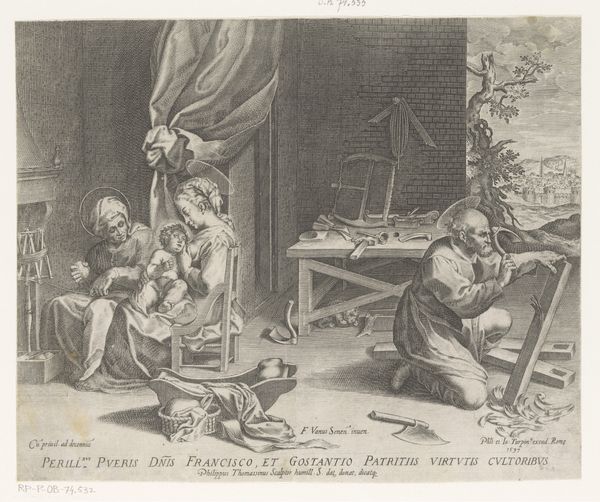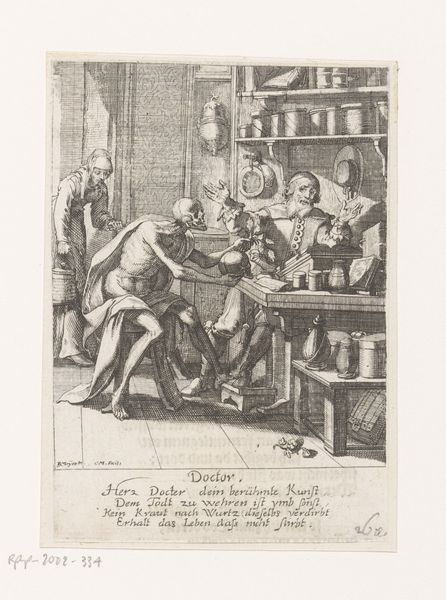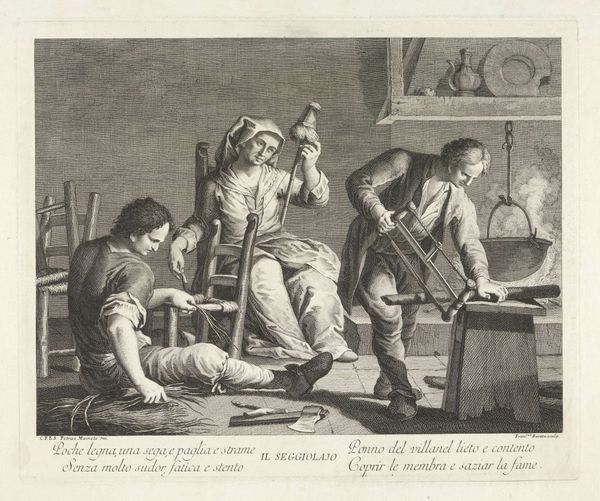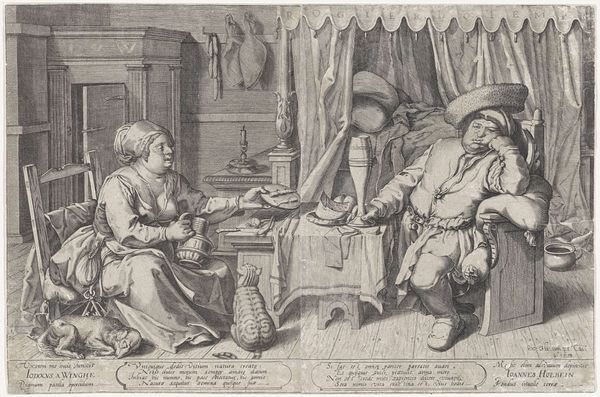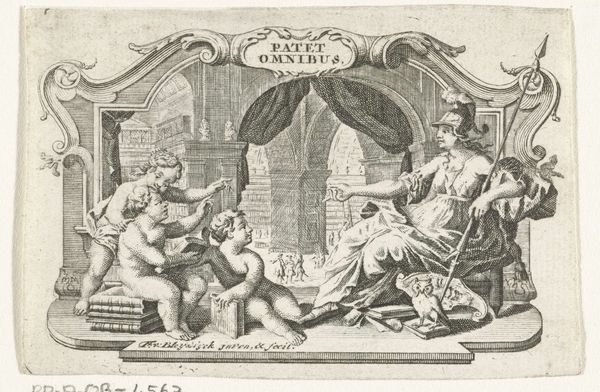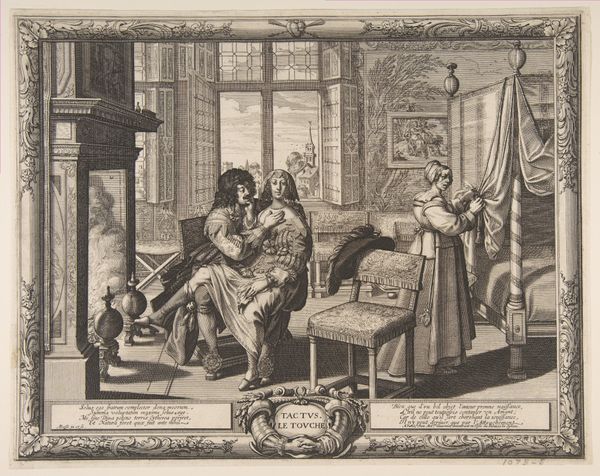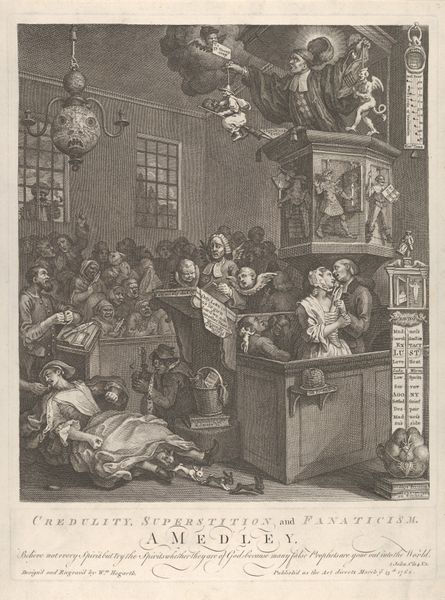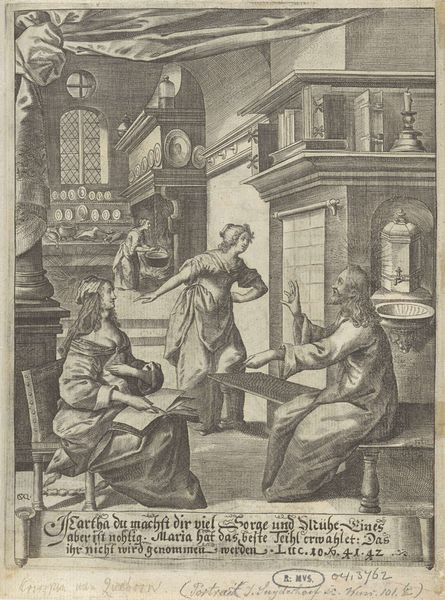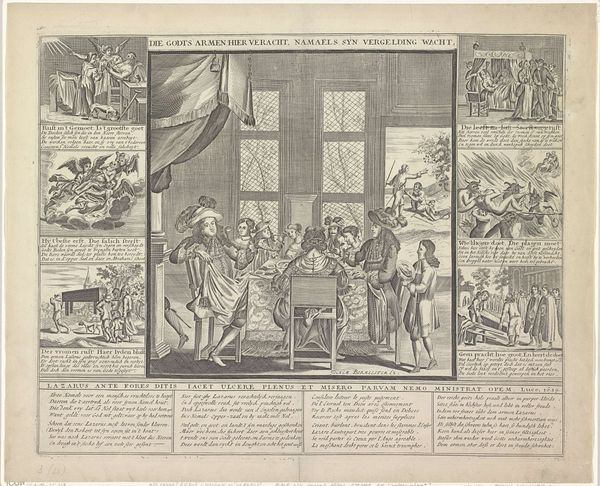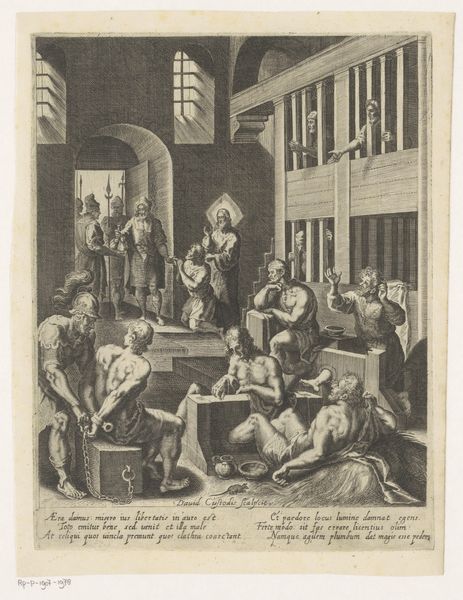
drawing, print, etching, engraving
#
portrait
#
drawing
#
baroque
# print
#
etching
#
boy
#
genre-painting
#
engraving
Dimensions: Sheet (trimmed): 9 in. × 9 3/4 in. (22.9 × 24.8 cm)
Copyright: Public Domain
Curator: Claude Augustin Duflos le Jeune produced this engraving entitled "Glass Blower" sometime between 1748 and 1758. It's currently housed at the Metropolitan Museum of Art. My initial impression is one of complete, comical chaos. Editor: Chaos, absolutely. I’m drawn to how the scene, while clearly staged and meticulously rendered as a print, evokes the very tangible anxieties around alchemy and the labor involved in these pursuits. Look at the discarded tools and upturned vessels strewn around this figure! It really underlines the process… the *work* behind this so-called 'science.' Curator: I agree! The discarded equipment certainly speaks to a material process gone awry. However, my attention is held by the boy's melodramatic gesture. Note his upturned palms, wide eyes; all meant to convey a theatrical despair that was in line with Baroque portraiture but also signifies universal concepts: ruin, thwarted dreams, and the fleeting nature of fortune, themes explored endlessly throughout visual culture. Editor: And it all revolves around the figure! You’ve got this furnace burning hot in the background versus the failed implements of labor in the foreground, all circling around the would-be craftsman. Is he reacting to something? Or posing? The setting itself–those windows, that hearth– feels intentionally rendered to box the character. The artist clearly plays with perspective to amplify this small space filled with equipment that overwhelms this personage. Curator: Exactly. It's the drama of knowledge colliding with the frustrating reality of manipulating base materials, of potential squandered. Alchemy itself has always held layers of symbolism. Even the broken crucible becomes emblematic: the loss of potential, both literal and spiritual. A fascinating reminder of humanity’s endless quest and inevitable setbacks! Editor: For me, it speaks to how prints could capture the physical and messy side of even lofty ambitions, underlining not just a practice, but a specific moment in time defined by human fallibility. What the “high art” tradition often neglects or obfuscates. I like how the prints made these topics digestible, affordable, accessible, almost like a pamphlet.
Comments
No comments
Be the first to comment and join the conversation on the ultimate creative platform.

